

This is a great guitar, and certainly one of the finest British made bass guitars available in mid-1960s Britain. The Vox Symphonic bass was manufactured in Dartford, UK, at a time when American instruments were hugely expensive. Unfortunately, the Symphonic was also hugely expensive, resulting in low sales, and a comparative rarity today.
Vox parent company, JMI, was the UK distributor of Fender guitars and amplifiers in the early 1960s. But from late 1960 they launched their own line of guitars, most strongly influenced by existing Fender models. Many were simple entry level guitars, but some, including the Symphonic bass were quite substantial; certainly comparable to their Fender equivalents. The Fender Precision on which it was based had a single pickup, whilst the Symphonic had two, but otherwise these guitars were remarkably similar.
The Symphonic had a solid wood body (many lower end Vox guitars were laminate), a nice 34" long scale neck, with adjustable truss rod and radiused rosewood fretboard. The thicker body allowed a standard 1/4" jack, rather than the coaxial TV-aerial style jack seen on many thinner-bodied Voxs. This was a pretty nice guitar!
But the Symphonic was just too expensive in comparison to an actual Fender, and perhaps insufficiently original compared to Phantom bass. It never sold well and as such, used examples rarely come up for sale. Vox UK ran into financial difficulties in late 1967 and the guitar production was wound down shortly afterwards. From this point, unsold stock was distributed at a discount, first by Dallas Arbiter, but then by other dealers as complete basses and in parts. Guitars sold like this typically have no serial number or headstock decals (though decals were always insufficiently hard-wearing so that alone indicates little). It was primarily the high end Fender copies like the Soundcaster, Consort and Symphonic bass that were sold on without serial numbers. Presumably JMI managed to shift most of their easier to sell (least expensive) guitars once problems became evident. The Symphonic bass was distributed by Dallas Arbiter as model 4537, but with no additional branding/identification to signify this fact.
These JMI-made but non-JMI distributed guitars are also pretty rare, but, at least in the case of the Symphonic, do come up more often than Vox-branded examples. The bass pictured below is indeed such an instrument. Although the neck is dated February 1966, it clearly didn't sell through '66 or '67, and was finally distributed without a serial number or headstock markings. Many of these post-Vox Vox guitars had Vox engraved pickup covers, though in this case they are plain. It did ship, however, with a Vox "V" bridge cover, the only real indication of its original maker.
Middle and late period Symphonic basses differ in many ways from the early 1960s examples, admittedly in pretty subtle ways. The images and accompanying text below highlights some of these. But the most immediate differences are: the position of the bridge, headstock shape, scratchplate material and pickup type, though there are other differences too. Compare this bass with a 1963 Symphonic.
The 1963 bass shown here represents later Symphonic production, with Vox-branded chrome-covered V1 pickups and an un-branded bridge cover. Later examples had a large V on the cover, and although having the same scale, the bridge positioned further back on the body. This was due to the neck joining the body at the 15th rather than 16th fret.
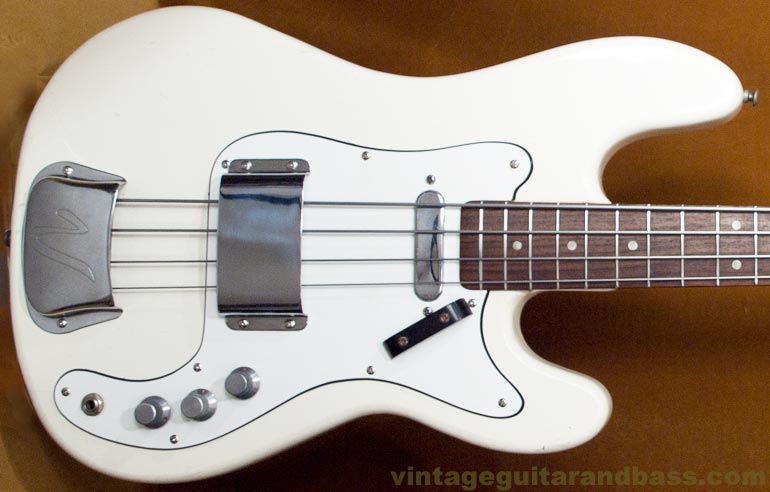

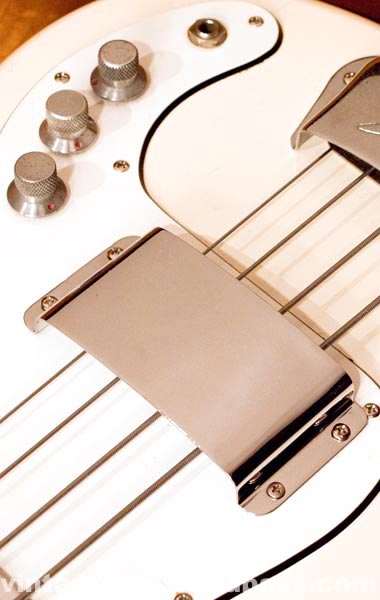


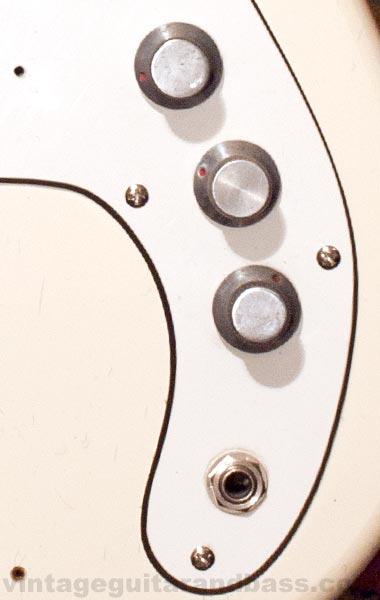


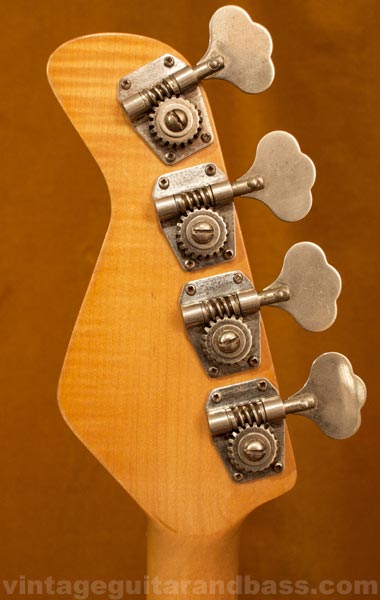
Subscribe to the vintageguitarandbass youtube channel for more vintage guitar and bass demos. Also, check out the other Vox Symphonic videos in the supporting members area.
Find out more about these instruments here: 1966 Vox Symphonic, 1963 WEM ER-15
This clip shows this 1966 Vox Symphonic bass played through a 1963 WEM ER15 with 1x12" Pick-A-Bass cab. This is a really nice playing bass, not dissimilar from the early 1960s Precision on which it was based. It's got a good tone, and is a far more substantial bass than many made by Vox. Strung here with Fender 9050L flatwound strings. This video shows a small sample of sounds using different bass and amp settings. See the longer version for a more in depth view of what this guitar/amp combination can do.
Recorded here with an Electrovoice RE-20 (left channel) and a Shure SM57 (right channel), through a Focusrite Scarlett 2i2 interface - highly recommended gear!
Find out more about these instruments here: 1966 Vox Symphonic, 1963 WEM ER-15
This clip shows this 1966 Vox Symphonic bass played through a 1963 WEM ER15 with 1X12" Pick-A-Bass cab. This is a really nice playing bass, not dissimilar from the early 1960s Precision on which it was based. It's got a good tone, and is a far more substantial bass than many made by Vox. Strung here with Fender 9050L flatwound strings.
Recorded here with an Electrovoice RE-20 (left channel) and a Shure SM57 (right channel), through a Focusrite Scarlett 2i2 interface - highly recommended gear!
Find out more about these instruments here: 1966 Vox Symphonic, 1964 Ampeg B-15N
This clip shows this 1966 Vox Symphonic bass played through a 1964 Ampeg B15. This is a really nice playing bass, not dissimilar from the early 1960s Precision on which it was based. It's got a good tone, and is a far more substantial bass than many made by Vox. Strung here with Fender 9050L flatwound strings
Recorded here with an Electrovoice RE-20 (left channel) and a Shure SM57 (right channel), through a Focusrite Scarlett 2i2 interface - highly recommended gear!
Find out more about this instrument here: 1966 Vox Symphonic
This clip shows this 1966 Vox Symphonic bass played through a Marshall 2061X reissue head / Marshall 1550 1x15 cab. This is a pretty gainy amp, and certainly not one to chose if you want hi-fi clean sounds. I've just used the bass channel here, but it can get a whole lot grittier if you daisy chain the lead and bass channels together, Strung here with Fender 9050L flatwound strings.
I'm not entirely happy with this video. The low E string sounds like it is a little to low and clanks against the frets a bit too often, and the Electrovoice microphone was starting to fail, adding extraneous vibrations to the signal. I'll replace this video when I get to record a better version.
Recorded here with an Electrovoice RE-20 (left channel) and a Shure SM57 (right channel), through a Focusrite Scarlett 2i2 interface - highly recommended gear!
Extra content on this guitar is included in our Supporting Members area here.


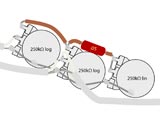
£354